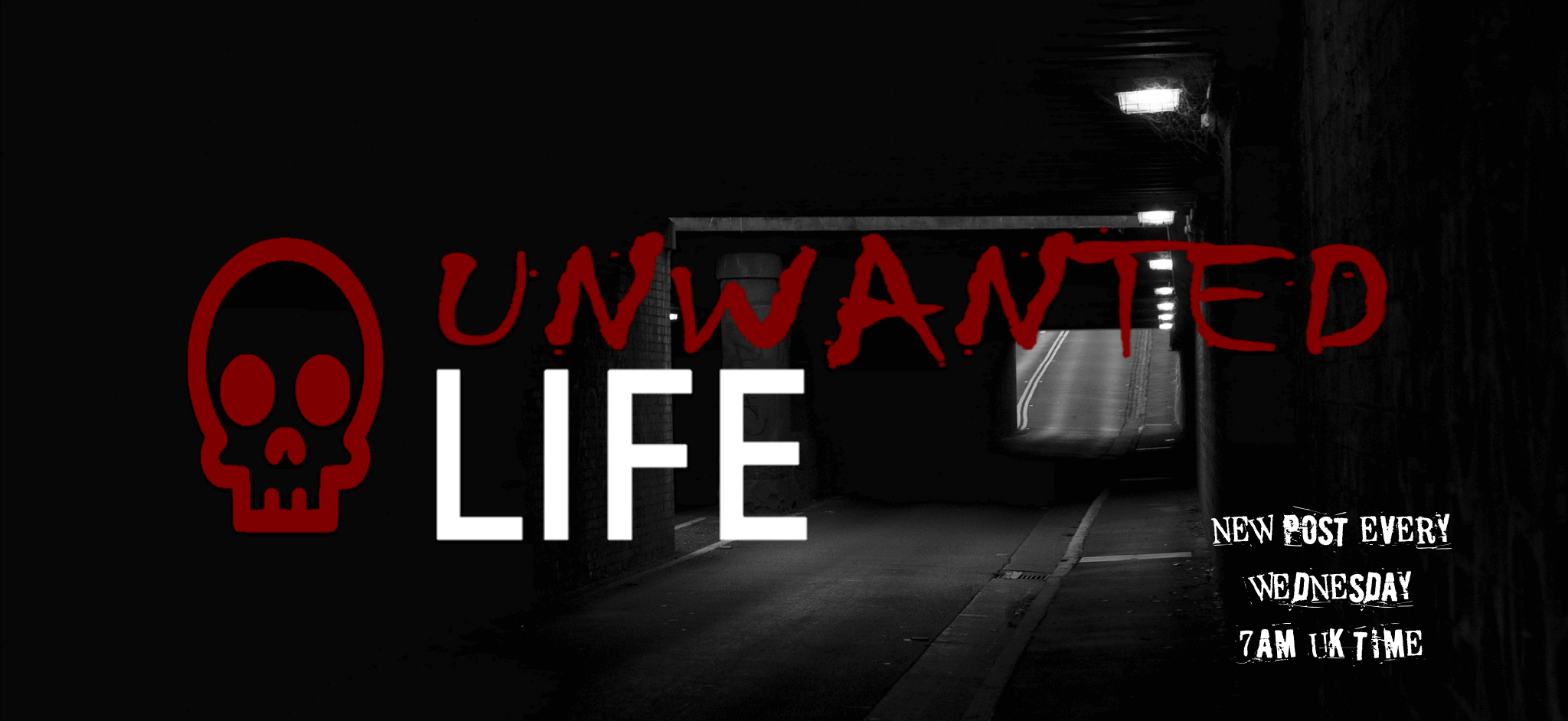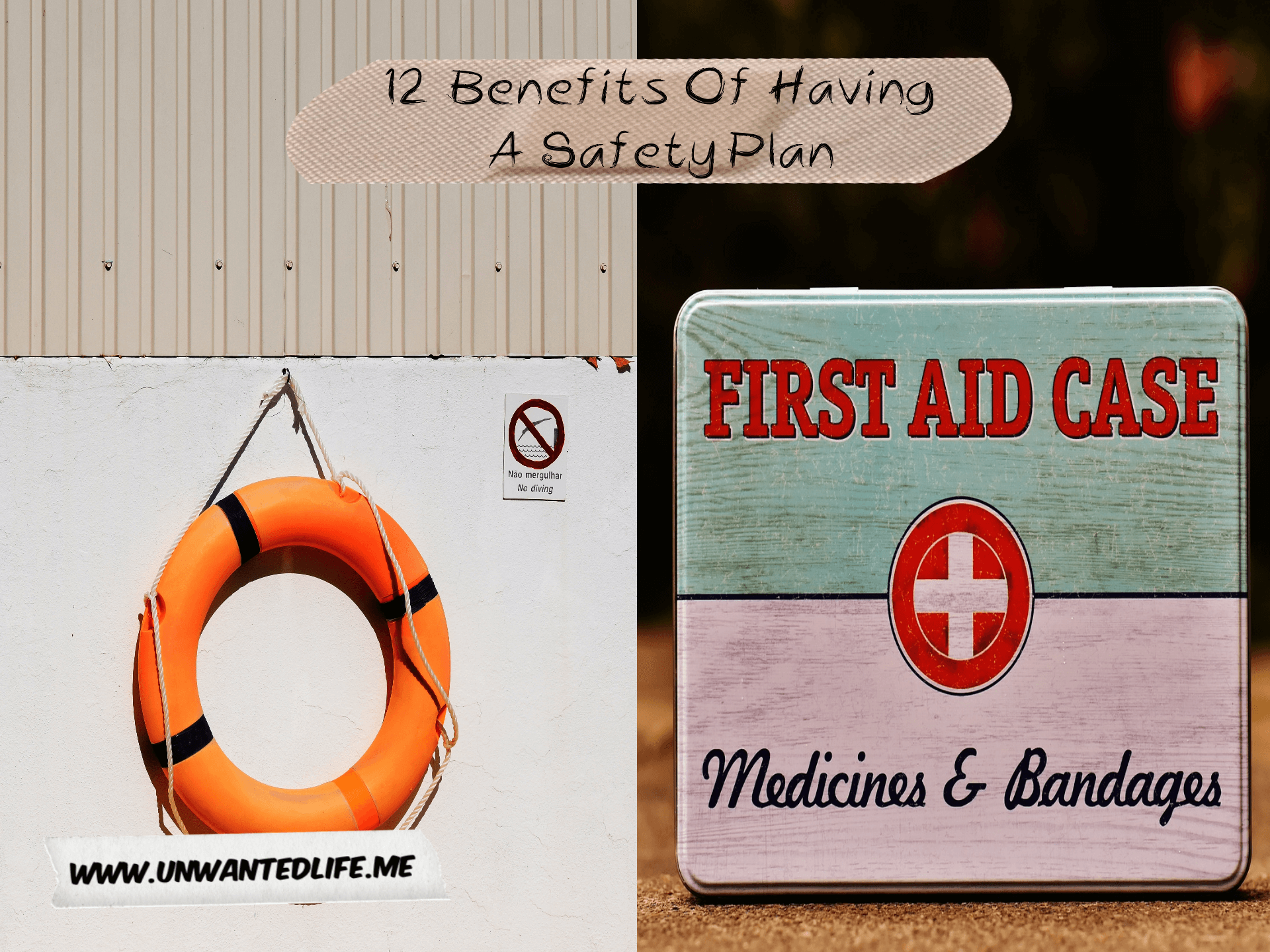When I was researching for my blog post for Suicide Prevention Day (Suicide And Suicide Prevention: Advice And Information), I came across a coping strategy I’d long forgotten: a safety plan. Thus, I’ve created a safety plan template anyone could use to help them stay safe.
Disclosure: This post contains affiliate links. If you click through and make a purchase, I’ll earn a commission, at no additional cost to you. Read my full disclosure here.
You might also want to check out my previous article ‘Suicide And Suicide Prevention: Advice And Information‘ because it contains some advice on how to help someone who’s suffering from suicidal thoughts and feelings.
Before I carry on with this article, please remember that it’s really important to speak to someone if you’re feeling suicidal or you’re worried you’ll harm yourself. Please visit my pages Global Crisis Lines And Support and UK Crisis Lines And Support for a list of global and UK crisis lines, hotlines, chat services, and text services if you need to talk to someone.
What Is A Safety Plan?
There are two main types of safety plans. The first is a safety plan that covers what you could do to avoid or manage a future event where you’re at risk of harm. For example, a plan of what you could do the next time you feel suicidal. This kind of safety plan allows you to follow a guide created by yourself when you’re in a rational and stable state. Allowing your more unstable self to benefit from your wisdom and knowledge during a time when it’s harder to access that.
The second type of safety plan is a plan you use in the moment when you’re at risk of harm. Effectively, it’s a worksheet to help keep you busy and distracted whilst the risk to yourself passes. For example, if you’re struggling with thoughts of self-harm, this would give you something to do to help distract yourself until the thoughts pass.
Two Groups Who Could Benefit Most From Creating A Safety Plan
There are two main groups of people who could benefit the most from having a safety plan: those who self-harm and those who struggle with suicidal thoughts and feelings.
Remember, anyone could reach a state where self-harming and thinking about taking their own life could happen. Mental health problems don’t discriminate.
The @NHSuk states that the current estimate for young people who self-harm is at around 10%. But people from other age groups also self-harm Share on X
Thoughts and feelings of self-harm and wanting to end your life are more common than most people would believe. According to WHO, suicide rates were estimated at being around 793,000 worldwide in 2016.
It has been reported that a history of self-harm can be an indicator of a higher risk that someone might try to take their own life. According to Chan et al. (2016), 32% of people who attempted suicide had a prior history of self-harm.

This is supported by Morgan et al. (2017). Whose team found that self-harming children and adolescents were 17 times more likely to die as a result of taking their own lives than those who don’t self-harm.
However, just because there’s a link between the two, doesn’t mean the two can be grouped together. The difference in mindsets between the two is quite different, which some people might be surprised to hear. But bear with me and let me try to explain why.
Each year, 1 in 5 females and 1 in 7 males engage in self-injury, according to Healthyplace.com Share on X
Suicide typically comes from a place of despair, hopelessness, and worthlessness. Those who want to end their lives want the pain to stop and they intend to make the suffering stop by ending their lives.
Whereas self-harming is normally an unhealthy coping strategy to help them cope with life so they can carry on living. They’re just looking for a form of release and relief to ease their emotional pain.
Benefits
Because of these differences, it is advisable to have a different plan for each possible situation you’re at risk of. This is because the best way to manage each risk will be different.
For example, if you’re unable to stop self-harming, then the next best thing is harm reduction. Completing the safety plan will help you develop coping strategies, which you’ll also be able to hone and develop as you figure out which strategies work best for you. This will lead to you better being able to manage your self-harming thoughts and feelings. Which, in time, will lead to you no longer self-harming.
Problem-solving skills are meant to function as a protective factor for managing suicidal thoughts and feelings, although the evidence isn’t strong. But if true, then creating a safety plan, and updating it, should help you develop better problem-solving skills, which will help you better protect yourself from yourself.
According to gov.uk, there are 4,500 suicides each year in England, and around 13 people end their lives every day Share on X
Problem-solving skills are meant to function as a protective factor for managing suicidal thoughts and feelings, although the evidence isn’t strong. But if true, then creating a safety plan, and updating it, should help you develop better problem-solving skills, which will help you better protect yourself from yourself.
Furthermore, a safety plan helps you plan in advance for the possibility of a future where you could find yourself in a suicidal despair state. Having a safety plan will allow you to take the steps needed to help you navigate this situation a lot easier than you might otherwise have.
Filling in the safety plan workbook will help give you something to distract yourself with until the thoughts and feelings pass. While, at the same time allowing you to better prepare yourself for future episodes.
The pre-planned safety plan will also help to distract you by giving you a pre-thought-out plan to help you navigate the situation. Which should make handling such episodes easier.
Both safety plan documents might even help you realise what makes you self-harm (to gain control, to deal with difficult emotions, for relief, and to punish yourself), or what leads you to your suicidal episodes, and thus enable you to work on those issues.
12 Reasons To Have A Safety Plan
- Safety plans will allow you to pre-plan for when you’re in a state of despair and can’t think clearly, allowing you to navigate this situation more easily.
- A safety plan will contain the information you need to help you handle the situation(s) you’ve planned for.
- A safety plan could help you reduce the likelihood that the situation you’re planning for will happen. But if the situation does still happen, it should help reduce its severity.
- It’s a simple solution to help with a complex problem.
- Creating a safety plan will help you recognise your triggers, what makes them worse, and what can help. This will help you better manage it in the long term, especially if you stay on top of updating it and share your plan with a professional as part of your treatment.
- They can be of help even if you’re not in a crisis.
- It can give you a small sense of reassurance because you’ve prepared yourself for how to handle the situation(s).
- If you’re comfortable doing so, it’s something you can share with your friends and family, so they will also know how to best help you in such a situation.
- To keep you or a loved one safe.
- Basically, it helps stop thoughts and feelings of self-harm and suicide from turning into actions.
- Giving you back control for when you might not feel like you have any.
- Using a safety plan could help you with your long-term recovery goals.
Click here for a PDF copy of a Safety Plan you can use and click here for the PDF of a Safety Plan Workbook. You can also find these links on my new Resources page.
What Else Could You Do?
You could create a comfort box filled with the things you like, such as photos of the people you care about, snacks you enjoy, favourite quotes and song lyrics, gifts from someone you care about, and/or anything that makes you feel warm and fuzzy inside.
As always, leave your feedback in the comments section below. Also, feel free to share your experiences of creating and/or using a safety plan in the comments section below as well. If you want to stay up-to-date with my blog, then sign up for my newsletter below. Alternatively, get push notifications for new articles by clicking the red bell icon in the bottom right corner.
Lastly, if you’d like to support my blog, then you can make a donation of any size below as well. Until next time, Unwanted Life readers.
References
Chan, M., Bhatti, H., Meader, N., Stockton, S., Evans, J., O’Connor, R., Kapur, N., & Kendall, T. (2016). Predicting suicide following self-harm: Systematic review of risk factors and risk scales. British Journal of Psychiatry, 209(4), 277-283. Retrieved from doi:10.1192/bjp.bp.115.170050 and https://www.cambridge.org/core/journals/the-british-journal-of-psychiatry/article/predicting-suicide-following-selfharm-systematic-review-of-risk-factors-and-risk-scales/C9D595168EDF06401A823E2E968915E1/core-reader.
Morgan, C., Webb, R. T., Carr, M. J., Kontopantelis, E., Green, J., Chew-Graham, C. A., Kapur, N., & Ashcroft, D. M. (2017). Incidence, clinical management, and mortality risk following self harm among children and adolescents: Cohort study in primary care. BMJ (Clinical research ed.), 359. Retrieved from https://doi.org/10.1136/bmj.j4351 and https://www.ncbi.nlm.nih.gov/pmc/articles/PMC5641980.


Very interesting article – I love the idea of a safety plan in which essentially you rational self guides yourself in your time of need You know best what will resonate with you in those moments so it makes perfect sense to have your own personalized safety plan.
Indeed
Very interesting and helpful read. Thank you for sharing awareness ❤️
Thanks for reading ?
This is such a great and informative post! Very important to have a safety plan for sure.
Thanks ?
I will print those 2 resources off. Although I’m in a pretty good place at the moment, I’m still living with depression, and always need to keep my “eyes on the ball” so to speak. They will be really useful, thanks.
I’m sorry to hear your struggling with depression, I know that issue far to well myself. But I’m glad my resources might be useful to you
very useful for those who feel they need it
I certainly hope so
I think it’s really important to share info on this topic. I am someone who struggles with my MH and I have a relapse box. It’s a box I get out when in moments of crisis to help me plan prevention. Thanks for sharing this 🙂
Ashleigh
I’ve been wanting to create a relapse/self-care boxes, can I ask what you have in yours?
I am grinning from ear to ear since I am surrounded by business plans, marketing plans, financial plans, and others. It is very good that you have developed this safety plan for dealing with mental health related challenges, depression and stress. I have left a comment because mental health is 100% nothing to be ashamed of, but to embrace the journey to healing through management and talking freely about it. Today, the need is even greater with the social isolation and social distancing coupled with lockdowns and quarantine measure – causing a further anxiety for those who can not stand staying in one place for too long in isolation – or confined within 4 walls.
Great article.
H E |https://thextraordinarionly.com
Indeed, a lot of people are struggling with their mental health in these current unusual times
Having a safety plan is a really good idea. I’ve never been depressed or suicidal so I’ve never needed to resort to anything like this but I think this could be adapted in may ways. Like creating a self care plan for when you’re having a bad mental health day for example.
Indeed, you could definitely adapt the concept for what to do in regards to your self-care if you’re having a bad mental health day
This is such a valuable post! Honestly, I’ve been there before – where you question whether or not to do something rash given your current situation – and I feel like a safety plan like this would have been a great tool to have at my disposal. I was lucky, I have an INCREDIBLE support system that caught what was happening and helped me to work through it, but not everyone has that. I will definitely be sharing this with a few people that I believe could really benefit from it right now!
It’s unfortunate that not everyone has a good support system, as it really does make a huge difference, as was the case with you. I hope the people you share it with find it a useful tool to have in their tool box
Very useful read. I can see all the work you did on the research. Keep it coming!!! Bookmarking this post
Thank you ?
A safety plan is like a solid piece of land to fall back to when you try to swim too far in a lake. I love the concept and the value of it, and its adaptability to suit the needs of people who need different kinds of plans to fall back to when the going gets rough. Thanks for sharing!
I love your solid piece of land metaphor
This is such an important topic to talk about. Having a safety plan is one of the most key things people can have in place.
Thank you for sharing this, it will be of huge benefit to people x
Thanks for reading
Me and my therapist put together a safety plan. It was quite hard to put together as personally I find it hard to notice when things are getting bad and what signs I show, but we realised a huge one is my sleep. Once my sleeping pattern goes out the window, my mental health tends to decline. It’s so useful to know this as I can try to prevent it from happening. Also, having a plan for what friends and family should do if I’m in crisis is extremely helpful and important x
It can be quite hard to identify warning sings, but it sounds like you’ve identified a really important one
Oh yeah……. I learn about having safety plans before. This is important to safe your emotions. Thank you for sharing.
Thanks for stopping by ?
Thank you so much for sharing this. I think it’s useful for people experiencing suicidal thoughts and also anyone supporting them.
I certainly hope so ?
Love this post, Unwanted Life! It is very well researched & written. I’m a social worker who has used the concept of safety plans in my work with adults who have mental illness. This is the best article I’ve seen on this topic.
Oh wow, that’s really high praise indeed
Grreat post. Thank you for sharing such an inspiring information.